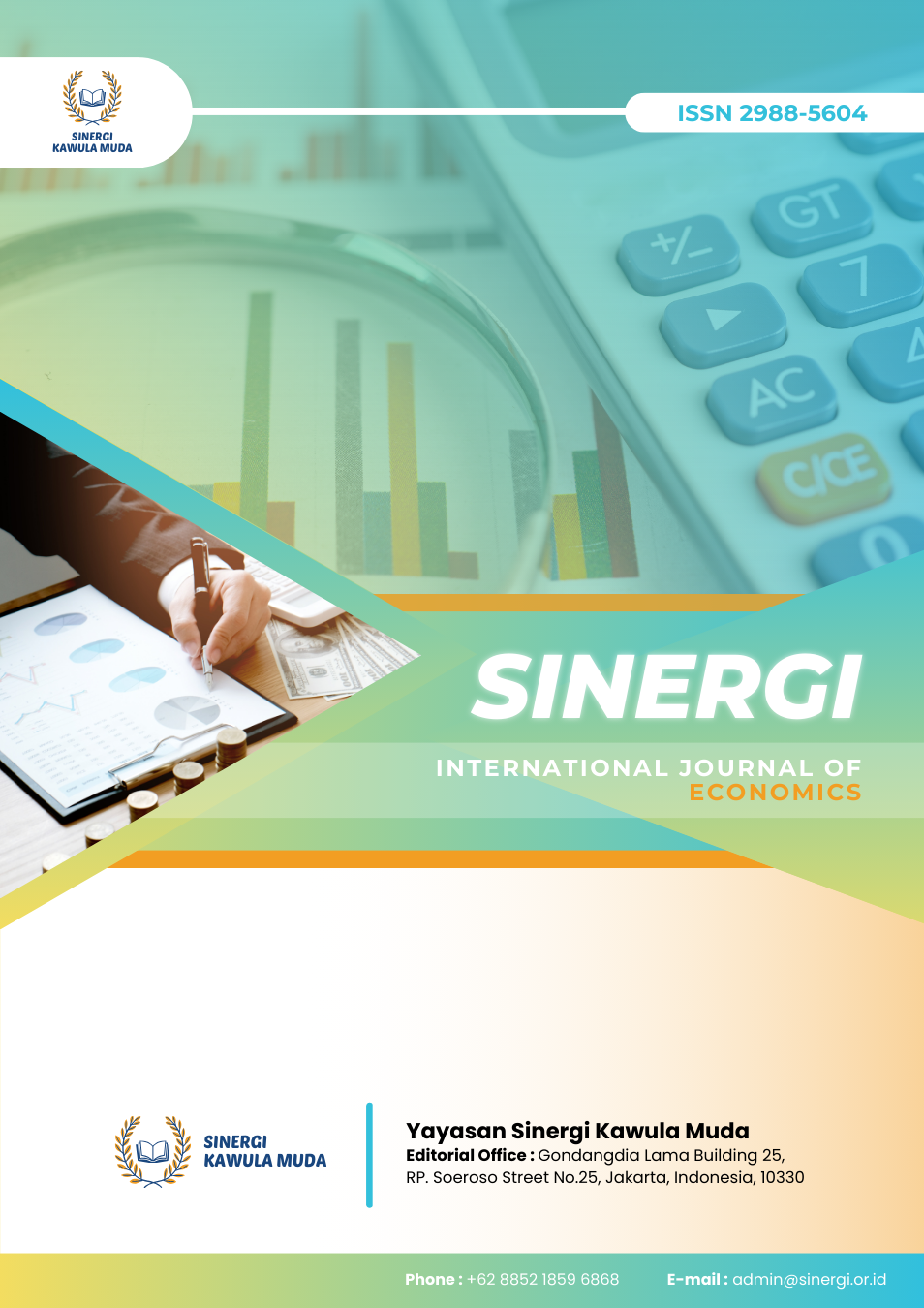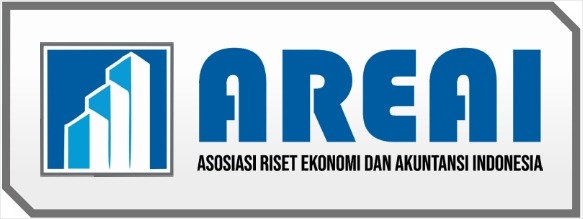The Impact of Government Expenditure and Labor Force on Regional Economic Growth: Evidence from Kendari, Indonesia
DOI:
https://doi.org/10.61194/economics.v3i2.749Keywords:
Economic Growth, Government Expenditure, Labor Force, Regional Development, KendariAbstract
This study investigates the influence of government expenditure and labor force on economic growth in Kendari City, Indonesia, during the post COVID 19 recovery period from 2021 to 2023. Grounded in Keynesian economic theory, the research aims to assess whether public fiscal interventions and workforce dynamics significantly contribute to local economic performance in an emerging urban economy. A quantitative, non experimental approach was employed using multiple linear regression on secondary data obtained from official statistics. The findings reveal that both government expenditure and labor force have a positive but statistically insignificant relationship with economic growth. The R squared value of 0.318 indicates a moderate explanatory power, with the majority of economic variation left unexplained by the model. The insignificance may stem from model limitations, such as omitted variables and short time horizons, or structural issues in budget allocation and labor market efficiency. These results suggest that while public spending and labor inputs are directionally aligned with growth, their impacts may depend on contextual variables like institutional capacity and sectoral targeting. The study contributes to regional economic literature by offering empirical evidence from a mid sized Indonesian city, underlining the importance of coordinated fiscal and labor strategies. Future studies should incorporate longer term data and additional explanatory variables to capture the complex dynamics of local development.
References
Abdelli, H., Gheraia, Z., Sekrafi, H., & Abid, M. (2024). The Asymmetric Impact of Government Expenditure on Economic Growth: Evidence From a NARDL Model. International Journal of Advanced and Applied Sciences, 11(3), 92–101. https://doi.org/10.21833/ijaas.2024.03.010 DOI: https://doi.org/10.21833/ijaas.2024.03.010
Ahuja, D., & Pandit, D. (2020). Public Expenditure and Economic Growth: Evidence From the Developing Countries. Fiib Business Review, 9(3), 228–236. https://doi.org/10.1177/2319714520938901 DOI: https://doi.org/10.1177/2319714520938901
Alam, M. S., Ansari, Y., Sha, N., & Khan, K. (2023). The Influence of Unemployment and Labor Force Participation Rates on Economic Development in GCC Countries: A Cointegration Approach. Journal of Infrastructure Policy and Development, 8(2). https://doi.org/10.24294/jipd.v8i2.2962 DOI: https://doi.org/10.24294/jipd.v8i2.2962
Amri, K. (2020). Kebijakan Fiskal Dan Pertumbuhan Ekonomi Daerah: Bukti Data Panel Di Indonesia. Al-Masharif Jurnal Ilmu Ekonomi Dan Keislaman, 8(1), 1–18. https://doi.org/10.24952/masharif.v8i1.2585 DOI: https://doi.org/10.24952/masharif.v8i1.2585
Aprianti, Y., Muliati, M., & Sulindrina, A. (2023). The Impact of Fiscal Variables on Economic Growth in Indonesia. Economics Development Analysis Journal, 12(1), 71–83. https://doi.org/10.15294/edaj.v12i1.58537 DOI: https://doi.org/10.15294/edaj.v12i1.58537
Ashari, F., & Siwi, M. K. (2022). Pengaruh Pengangguran, Pengeluaran Pemerintah, Investasi Dan Inflasi Terhadap Pertumbuhan Ekonomi Di Indonesia Pada Tahun 1989-2019. JSN, 1(2), 315–329. https://doi.org/10.24036/jsn.v1i2.46 DOI: https://doi.org/10.24036/jsn.v1i2.46
Chae, A., & Hanson, J. (2021). When the Pandemic Creates Behavioral Changes and Economic Crisis: The COVID-19 Pandemic and the Implications for Policy Making. Journal of Student Research, 10(3). https://doi.org/10.47611/jsrhs.v10i3.1673 DOI: https://doi.org/10.47611/jsrhs.v10i3.1673
Damayanti, E., & Widyowati, A. (2022). Dampak Penerapan Faktor Green Accounting Terhadap Profitabilitas Perusahaan Manufaktur Peserta Proper Yang Listing Di Bursa Efek Indonesia Tahun 2017-2019. Jurnal Akuntansi Dan Bisnis Krisnadwipayana, 9(1), 559. https://doi.org/10.35137/jabk.v9i1.639 DOI: https://doi.org/10.35137/jabk.v9i1.639
Dzigbede, K. D., Pathak, R., & Muzata, S. (2022). Budget Systems and Post-Pandemic Economic Resilience in Developing Countries. Journal of Public Budgeting Accounting & Financial Management, 35(3), 333–353. https://doi.org/10.1108/jpbafm-03-2021-0036 DOI: https://doi.org/10.1108/JPBAFM-03-2021-0036
Fakhrizal, F., Mulyadi, M., & Alfaris, S. (2023). Pengaruh Investasi Asing Langsung, Tenaga Kerja Dan Pengeluaran Pemerintah Terhadap Pertumbuhan Ekonomi Di Indonesia. Jim Jurnal Ilmiah Mahasiswa, 1–20. https://doi.org/10.32505/jim.v5i1.5893 DOI: https://doi.org/10.32505/jim.v5i1.5893
Fikri, W. N., & adhana, I. F. (2023). Pengaruh Tingkat Pendidikan, Tenaga Kerja, Pendapatan Asli Daerah (Pad) Dan Dana Zakat Terhadap Pertumbuhan Ekonomi Di Eks-Karesidenan Surakarta Tahun 2016-2021. Wijob - Widya Dharma Journal of Business, 2(01), 8–23. https://doi.org/10.54840/wijob.v2i01.116 DOI: https://doi.org/10.54840/wijob.v2i01.116
Hassan, N. U., Hussain, S., Saboor, A., & Hanif, M. (2023). Nexus Among Human Capital, Public Expenses and Economic Growth: Empirical Evidence From Developing World. Bbe, 12(3), 485–492. https://doi.org/10.61506/01.00057 DOI: https://doi.org/10.61506/01.00057
Ihwandi, L. R., & Khoirunurrofik, K. (2023). Regional Financial Performance and Inclusive Economic Development: Empirical Evidence From Provinces in Indonesia. Jurnal Bina Praja, 15(2), 417–429. https://doi.org/10.21787/jbp.15.2023.417-429 DOI: https://doi.org/10.21787/jbp.15.2023.417-429
Islam, Md. S. (2022). Does the Trade‐led Growth Hypothesis Exist for South Asia? A Pooled Mean Group Estimation. Regional Science Policy & Practice, 14(2), 244–258. https://doi.org/10.1111/rsp3.12481 DOI: https://doi.org/10.1111/rsp3.12481
Kostrytsya, V., & Burlai, Tetiana. (2021). Employment Recovery Policy in the Post-Pandemic Period: The International Context. Ekonomìčna Teorìâ, 2021(4), 73–94. https://doi.org/10.15407/etet2021.04.073 DOI: https://doi.org/10.15407/etet2021.04.073
Lika, E., & Pangastuti, D. (2024). Analysis of the Determinants of Economic Growth in the Province of East Nusa Tenggara. Devotion Journal of Research and Community Service, 5(6), 691–704. https://doi.org/10.59188/devotion.v5i6.744 DOI: https://doi.org/10.59188/devotion.v5i6.744
Millenia, A. P., & Hasmarini, M. I. (2023). Analisis Pengaruh Pengeluaran Pemerintah, Investasi, Angkatan Kerja Dan Human Capital Investment Di Provinsi Jawa Tengah Tahun 2019-2020. Ekonomis Journal of Economics and Business, 7(1), 685. https://doi.org/10.33087/ekonomis.v7i1.815 DOI: https://doi.org/10.33087/ekonomis.v7i1.815
Nibret, H. (2019). Investigate on the Determinants of Economic Growth in Ethiopia. Jesd. https://doi.org/10.7176/jesd/10-1-04 DOI: https://doi.org/10.7176/JESD/10-1-04
Pratama, Z. I., Pratama, A., & Sariwulan, Rd. T. (2023). The Effect of Investments and Government Expenditure Towards Economic Growth of Districts/Cities in West Java 2016 - 2020. Jurnal Pendidikan Ekonomi Perkantoran Dan Akuntansi, 4(1), 194–204. https://doi.org/10.21009/jpepa.0401.13 DOI: https://doi.org/10.21009/jpepa.0401.13
Runtunuwu, P. C. H., Topa, A., & Hasyim, A. (2023). Government Expenditure and Its Role Against North Maluku Economic Growth. Jurnal Ekonomi Manajemen Akuntansi Keuangan Bisnis Digital, 2(2), 83–92. https://doi.org/10.58222/jemakbd.v2i2.233 DOI: https://doi.org/10.58222/jemakbd.v2i2.233
Sá, J., & Luís, A. L. (2024). Is Keynesianism Still Increasingly Relevant? The Importance of the Economic Multiplier. Journal of Infrastructure Policy and Development, 8(12), 8276. https://doi.org/10.24294/jipd.v8i12.8276 DOI: https://doi.org/10.24294/jipd.v8i12.8276
Sari, J., Irsad, & RAHMANTA, R. (2021). Analysis of the Influence of the Amount of Labor, Level of Education and Government Spending on Economic Growth in North Sumatera. International Journal of Research and Review, 8(4), 211–219. https://doi.org/10.52403/ijrr.20210428 DOI: https://doi.org/10.52403/ijrr.20210428
Sha, X. (2023). Research on the Impact of Heterogeneous Labor Inflows on the Economic Growth of Regions on Both Sides of the Hu Huanyong Line. Academic Journal of Business & Management, 5(22). https://doi.org/10.25236/ajbm.2023.052205 DOI: https://doi.org/10.25236/AJBM.2023.052205
Suriani, S., & Keusuma, C. N. (2015). Pengaruh Pembangunan Infrastruktur Dasar Terhadap Pertumbuhan Ekonomi Di Indonesia. Ecosains Jurnal Ilmiah Ekonomi Dan Pembangunan, 4(1), 1. https://doi.org/10.24036/ecosains.10962757.00 DOI: https://doi.org/10.24036/ecosains.10962757.00
Suriyankietkaew, S., & Nimsai, S. (2021). COVID-19 Impacts and Sustainability Strategies for Regional Recovery in Southeast Asia: Challenges and Opportunities. Sustainability, 13(16), 8907. https://doi.org/10.3390/su13168907 DOI: https://doi.org/10.3390/su13168907
Tahu, G. P., Yuesti, A., Bhegawati, D. A. S., Menes, C. C., & Orbaningsih, D. (2024). The Influence of Regional Original Income and General Allocation Funds on Economic Growth With Capital Expenditures as an Intervening Variable. Revista De Gestão Social E Ambiental, 18(6), e05795. https://doi.org/10.24857/rgsa.v18n6-051 DOI: https://doi.org/10.24857/rgsa.v18n6-051
Vikia, Y. M. (2023). The Solow-Swan Theories: An Empirical Evidence in Various Indonesian Provinces. Optimum Jurnal Ekonomi Dan Pembangunan, 13(2), 155–174. https://doi.org/10.12928/optimum.v13i2.8123 DOI: https://doi.org/10.12928/optimum.v13i2.8123
Wibowo, P. A. (2023). Analisis Determinan Produk Domestik Bruto Indonesia Periode 2000-2021. Determinasi, 1(4). https://doi.org/10.23917/determinasi.v1i4.63 DOI: https://doi.org/10.23917/determinasi.v1i4.63
Zhang, D. (2021). Fiscal Policy Benefits and Green Recovery of Firms: An Experimental Exploration of Chinese Listed Firms in Post-Covid-19. Economic Change and Restructuring, 56(5), 2921–2942. https://doi.org/10.1007/s10644-021-09344-6 DOI: https://doi.org/10.1007/s10644-021-09344-6






